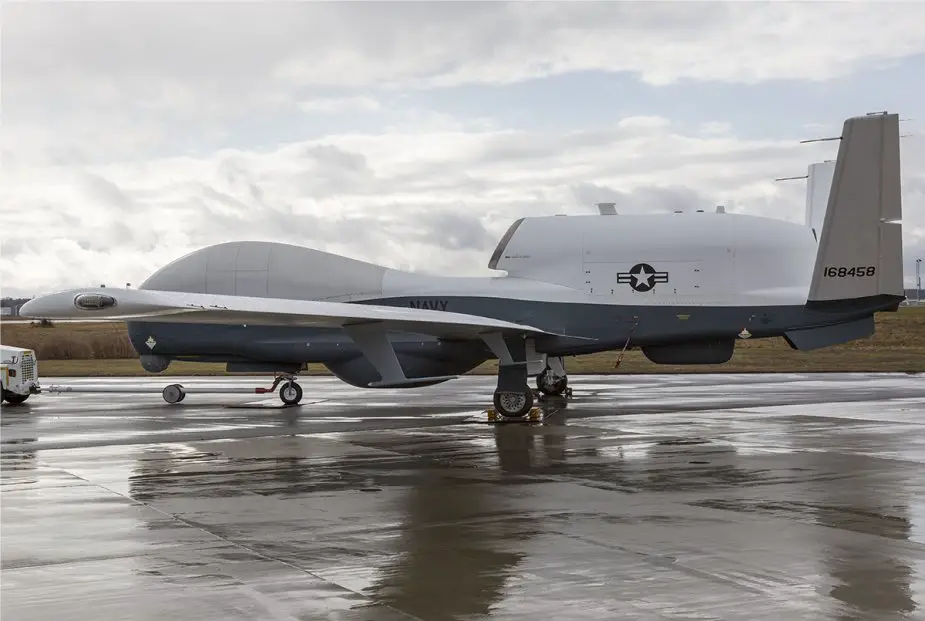According to information published by the U.S. Navy on October 19, 2021, two MQ-4C Triton unmanned aircraft systems operated by Unmanned Patrol Squadron (VUP) 19 departed from Naval Air Facility Misawa, and returned to Andersen Air Force Base in Guam upon completing their first rotational deployment to Japan.
Follow Navy Recognition on Google News at this link
 MQ-4C Triton Unmanned Aircraft Systems (Picture source: Sldinfo)
MQ-4C Triton Unmanned Aircraft Systems (Picture source: Sldinfo)
The two MQ-4C Tritons will continue to operate from their forward-deployed location at Andersen Air Force Base to provide maritime surveillance and persistent intelligence, surveillance and reconnaissance capabilities to the U.S. 7th Fleet in support of U.S. interests and regional allies.
The MQ-4C Triton’s persistence and capabilities complement the Navy’s P-8A Poseidon multi-mission maritime patrol and reconnaissance aircraft and are integral to the Navy’s Maritime Strategy.
Triton is the first high altitude, long-endurance aircraft that can conduct persistent Intelligence, Surveillance and Reconnaissance (ISR) missions to complement the P-8 in the maritime domain. The Navy plans to deploy Triton to five orbits worldwide.
The fuselage of the MQ-4C Triton is an aluminum semi-monocoque construction while the V-tail, engine nacelle, and aft fuselage are made of composite materials. It has a length of 14.5 m, a height of 4.7 m, and a wingspan of 39.9 m. It has an internal payload of 1,452 kg maximum and an external payload of 1,089 kg. The MQ-4C Triton can fly at a maximum altitude of 18,300m (60,000ft). It has a gross take-off weight of 14,628 kg. Its maximum unrefueled range is 18,427 km (9,950 nm) and has a flight endurance of 30 hours. It can reach a maximum speed of 575 km (357 mph).



